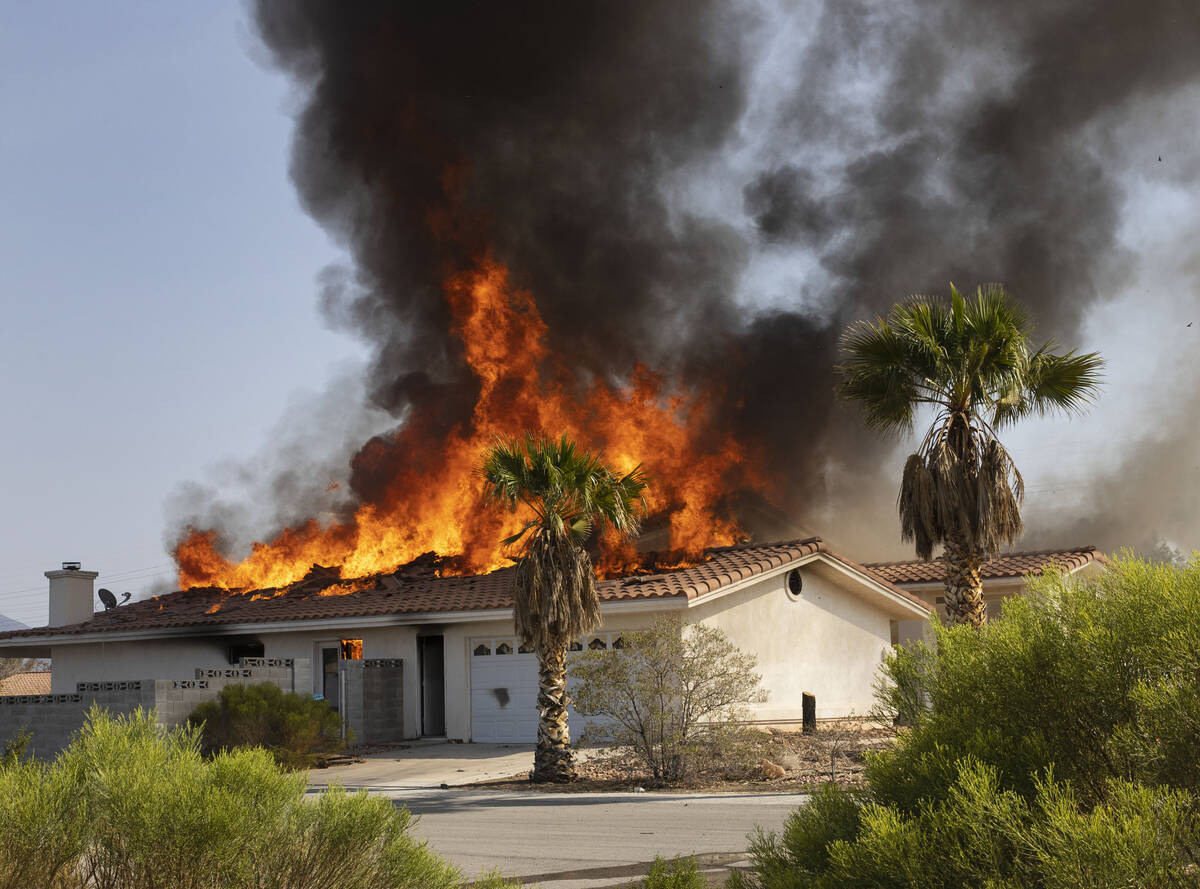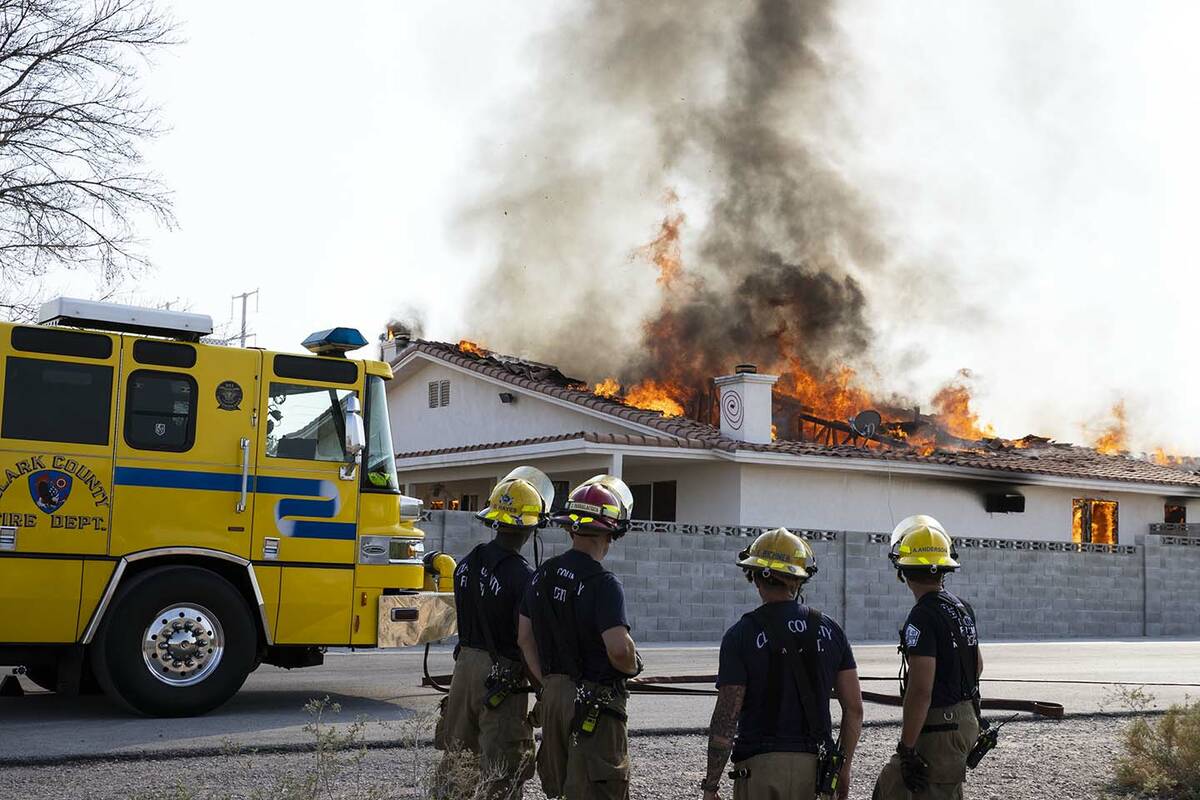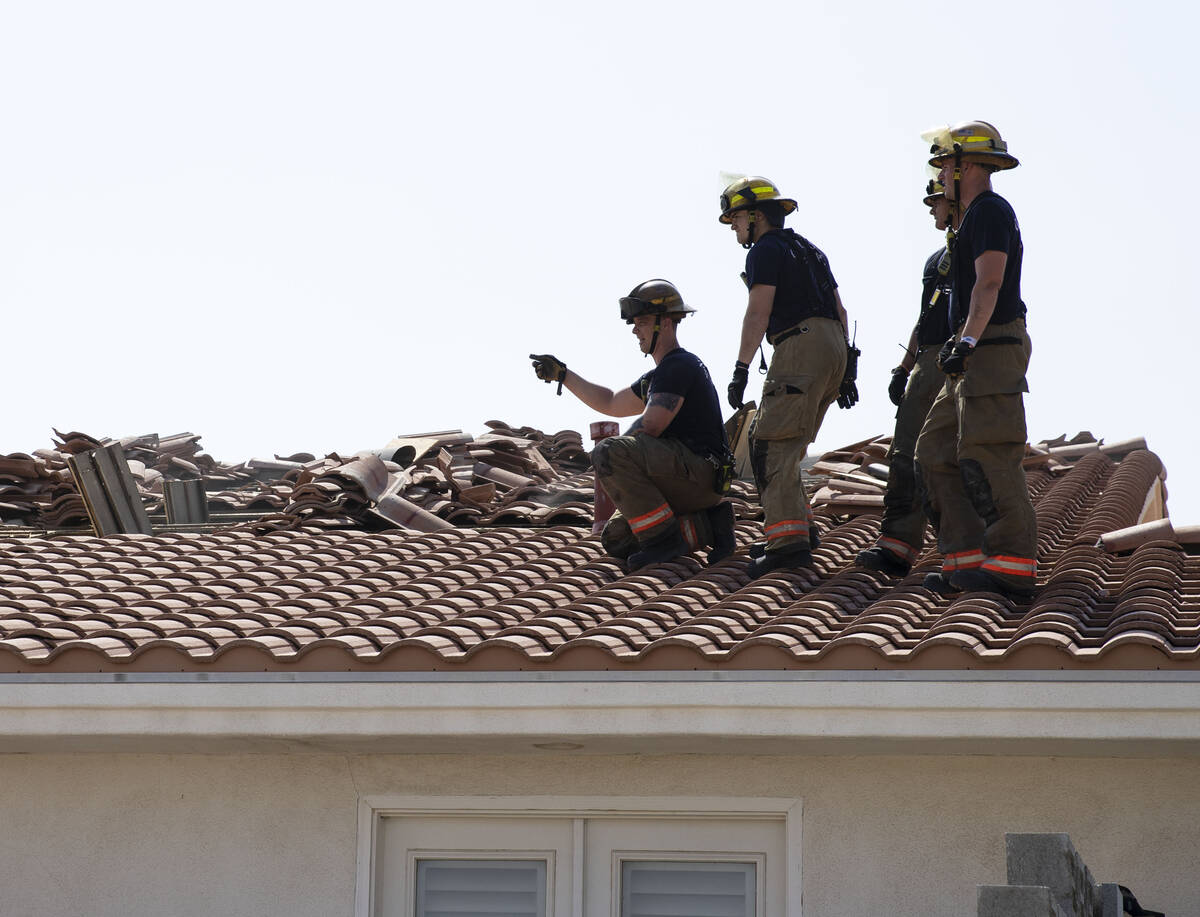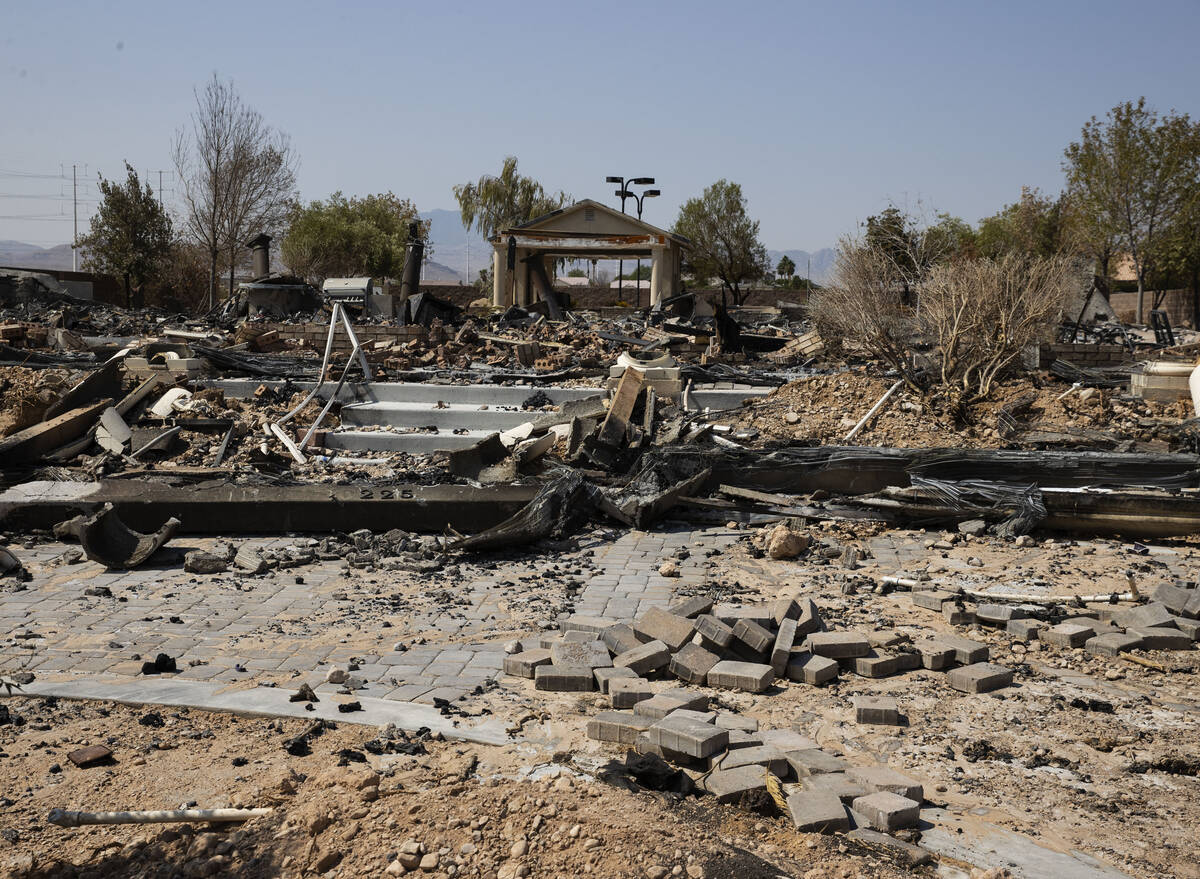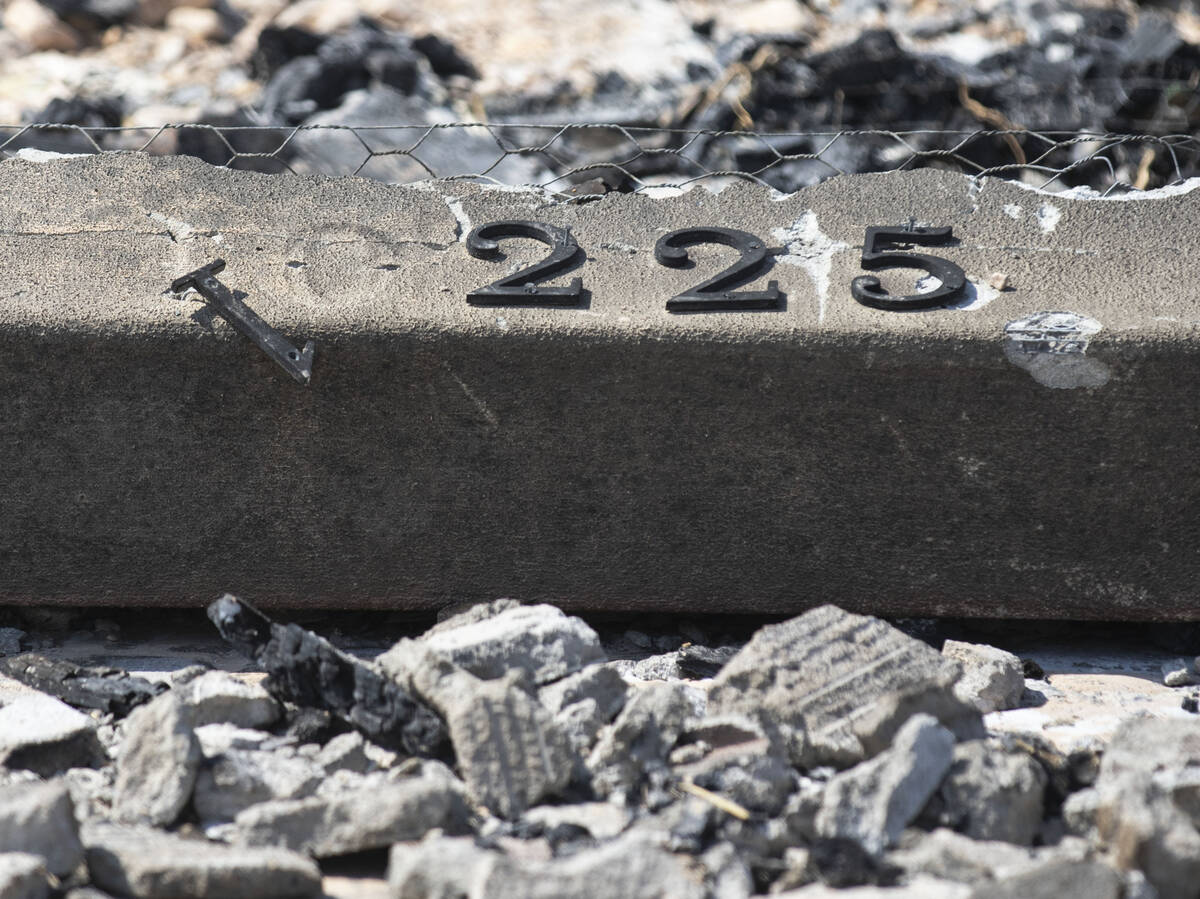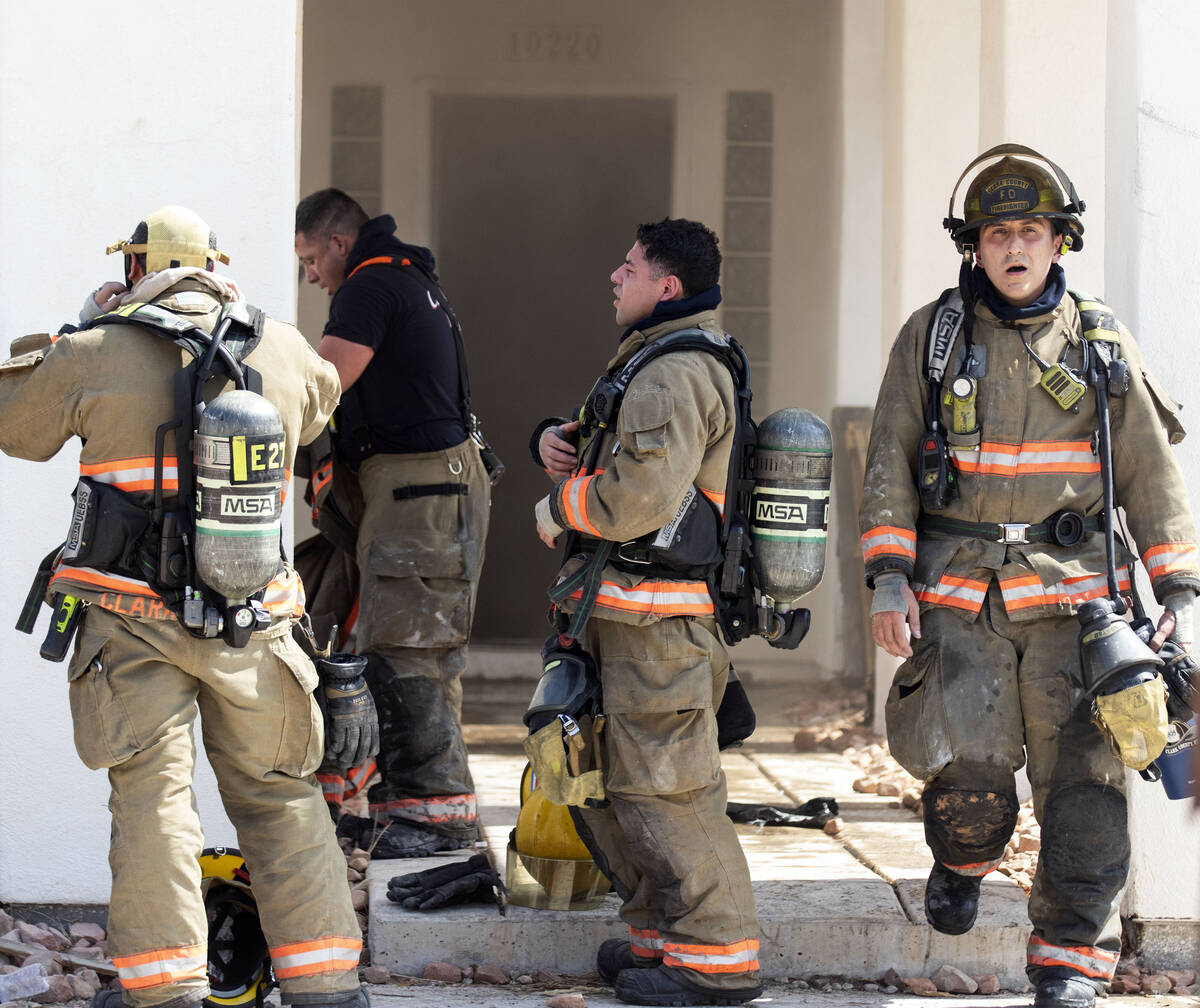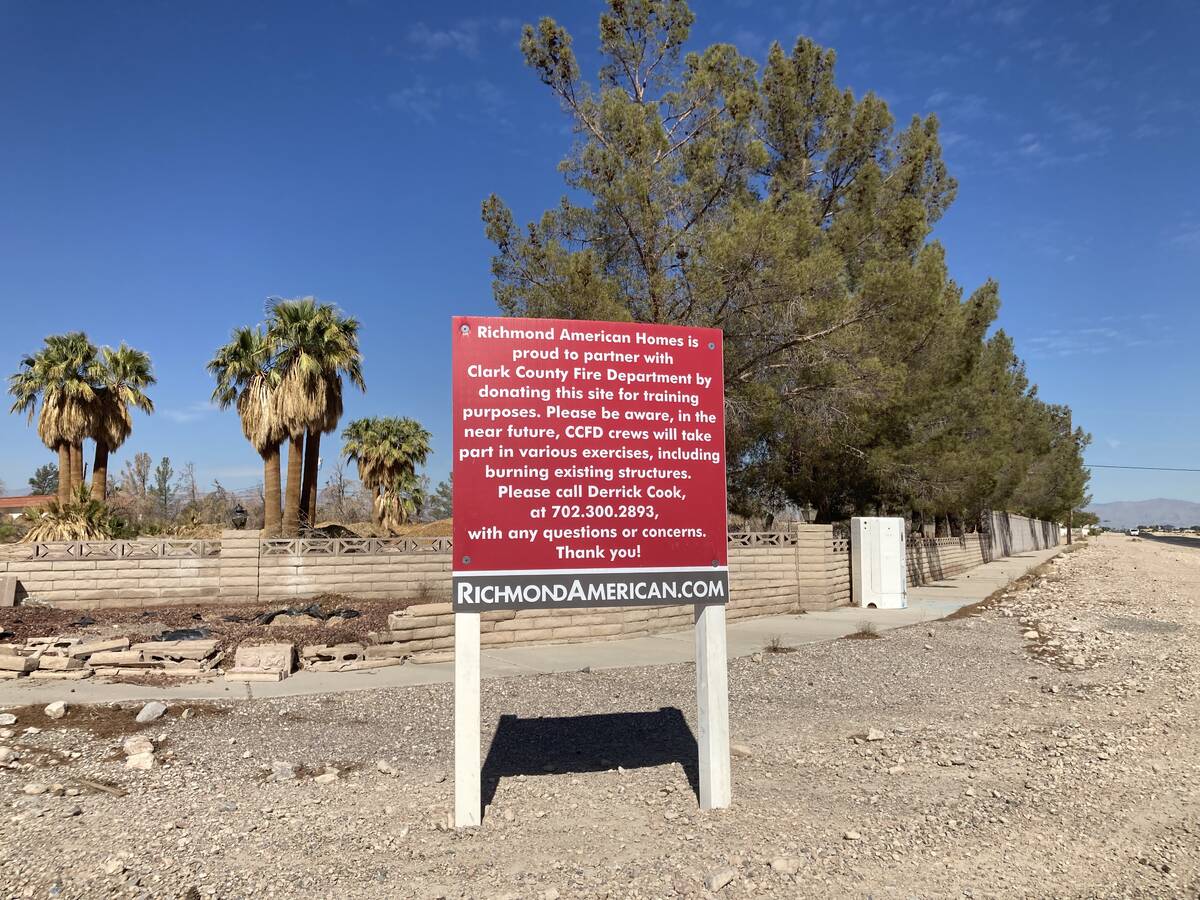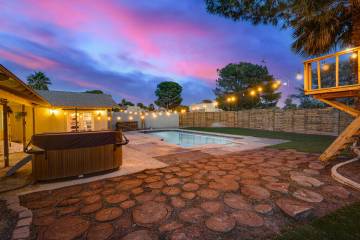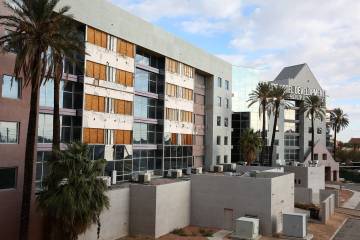Firefighters burn down houses in Las Vegas, courtesy of developers
If you’re a developer, what’s one way to get rid of some houses to clear space for a new project?
Let ’em burn.
Having bought nearly $17 million worth of real estate in the southern Las Vegas Valley, Richmond American Homes donated houses to the Clark County Fire Department for training. One Friday afternoon last month, after fire crews trained in a house over the course of three days, they stripped the drywall, went outside and watched as the one-story house went up in flames.
The so-called live-fire training, off Valley View Boulevard and Cactus Avenue, offered a glimpse into a seemingly little-known slice of Las Vegas’ housing market: Instead of demolishing homes, builders sometimes give them to firefighters to burn to the ground.
Southern Nevada homebuilders frequently buy project sites that are empty tracts of land, with no structures to demolish. But officials say house donations provide valuable training opportunities, as crews go into unknown buildings to fight fires just as they would in actual emergencies.
“It’s about as real-world as it can get,” Clark County Fire Capt. Jared Johnson said.
‘Invaluable’ training
Andrew Smith, president of Las Vegas-based Home Builders Research, said he had never heard of local developers giving houses to firefighters for training. But he is seeing more land purchases in which builders assemble multiple parcels, some of which have houses.
“This is something I can’t really recall seeing much at all in the past,” he said, adding builders have to “get creative” as the valley’s inventory of choice parcels shrinks.
Longtime Las Vegas developer Larry Canarelli indicated he had probably donated more homes than any other builder in town for public-safety training, estimating he had given about a dozen houses over the years.
Canarelli, who sold the local construction operations of his firm American West Homes in 2019, said he donated houses that were first used for SWAT training and then burned by fire crews.
Donating a house has some liability issues, he noted, and overall, it would be “a lot easier if we just went in and tore the house down.”
But the donations help build relationships with public-safety agencies, and first-responders get “invaluable” training, Canarelli said.
‘Burn this house to the ground’
Richmond American purchased 29 acres of real estate off Valley View between Cactus and Pyle avenues for $16.9 million combined, in deals that closed Sept. 1 and 8. The spread was mostly vacant land but also included four houses, county records indicate.
The homebuilder posted a sign on one of its parcels along Valley View alerting people to upcoming fires, saying it was “proud to partner” with the fire department “by donating this site for training purposes.”
“Please be aware, in the near future, CCFD crews will take part in various exercises, including burning existing structures,” the sign declared.
Richmond American did not respond to requests for comment for this story.
On Sept. 24, fire crews worked the Richmond American-owned house at 10220 Schuster St.
Johnson said the department is sometimes “fortunate enough” to get this type of training two or three times a year, though a year or two can pass without any house donations.
After the Review-Journal asked the department how many homes had been donated annually over the past 10 years to burn in training exercises, Clark County Fire Training Officer Gary Stevenson said in a statement that “there have been years of famine but also years when we may get as many as five or more structures.”
Fire officials are able to use some structures for “destructive training,” such as cutting and burning, but others can only be used for “non-destructive training,” such as hose dragging, according to Stevenson.
“What I can say is the exponential training value fire departments get from donated structures enhances the safety of the public along with our members,” he said.
Outside the house on Schuster, Johnson said crews rotate through and conduct around 10 or 11 “evolutions” a day. They light a fire, battalion chiefs assume command, and firefighters start arriving.
“We try to make it as real as possible,” he said.
Firefighters use a torch to start the blaze and stack the room with wood or couches. They also add drywall so a room can withstand 10 to 15 burns, he indicated.
It was the third day of burning the house — a 3,700-square-foot home with a casita — and a platoon had finished its training at the property, according to Johnson.
“Now they’re getting ready to burn this house to the ground,” he said.
Contact Eli Segall at esegall@reviewjournal.com or 702-383-0342. Follow @eli_segall on Twitter.



